The Reality of Full Hand Counts: A Guide for Election Officials
In This Resource
-
Introduction
-
Key Takeaways
-
Spotlight: Shasta County, California
-
Spotlight: Osage County, Missouri
- How a Hand Count Works
- Hand Count Challenges: Complexity
-
Hand Count Challenges: Cost
-
Hand Count Challenges: Delay
- Hand Count Challenges: Inaccuracy
-
Enhancing Trust in Modern Voting Systems and Machines
-
Conclusion
-
Appendix: Hand Counting Case Studies
This report was written and designed in partnership between the States United Democracy Center and The Elections Group.
Hand counting has a time and a place in election administration. But in an emerging trend, some election officials are facing calls to use full hand counts as the primary or exclusive method of counting votes in elections.
States United and The Elections Group prepared this resource to help election officials navigate this new landscape and make sure elections are accurate and efficient.
On this page, election officials can find information on the major problems presented by a full hand count: complexity, higher costs, delays, and mistakes. We also offer recommendations for communicating with the public and providing the facts about modern voting systems, which are cost-effective, reliable, and fast.
The bottom line: Hand counts are regularly and properly used to audit election results. But trying to replace a modern voting system with a full hand count leads to significant obstacles for election officials as they conduct free, fair, and secure elections.
Election officials in some jurisdictions are being pressed to consider replacing their automated vote-counting systems with full hand counts.
Full hand counts are different from limited hand counts, which are common and play a valuable role in elections. Limited hand counts are often used during the audit process, for example, to make sure automated counting systems produced accurate results.
In full hand counts, human teams manually tabulate every ballot and every contest, and their results are used as the official results. As this resource will show, this kind of effort to replace a modern voting system with a full hand count practically guarantees complexity, higher costs, delays, and mistakes.
The best testimony explaining these problems comes from local election officials across the United States. They have studied and tested full hand counts. And, as the chief operating officer for the Georgia secretary of state put it, their experience shows that a full hand count “is more expensive, less accurate (by a lot), delays results, puts outcomes in doubt.”
By comparison, election officials have determined that modern voting systems are cost-effective, reliable, and fast. As Clerk Nicci Kammerich of Osage County, Missouri, wrote, voting systems “are faster, accurate and more efficient to get the job done”—and they allow election officials to “ensure there is no fraud and everything is accurate in a timely manner for our citizens.”
In this resource, we’ll explain how full hand counts typically work. We’ll break down the challenges they present. And we’ll provide examples from across the country.
Finally, we’ll offer ways for election officials to build and maintain public trust in their existing voting systems.
Throughout the resource, we’ll hear from election officials who analyzed what a full hand count would mean in their jurisdictions. Their focus was on serving the voters and delivering election results with speed and accuracy. What they found should resonate with anyone who has an interest in accurate election results, timely election resolution, and functioning election departments.
Full Hand Count Versus Auditing with Hand Counts
Full hand counts differ in important ways from partial hand count audits, which are commonly used to check automated tallies.
- Partial hand count audits are limited in scope. Election workers review a subset of the cast ballots and contests. (A typical audit includes 1 percent to 10 percent of all ballots, machines, or precincts, and it covers one or two contests.) Many audits are designed to escalate: If discrepancies are discovered, the audit expands to an additional sample of ballots. This design is similar to auditing practices in other industries. It significantly reduces the time, logistical challenges, and costs that would be associated with tracking tens or hundreds of thousands of ballots and counting results from dozens of contests.
- Partial hand count audits are not used to produce certified results. They are used to verify that voting equipment was programmed accurately and tallied votes correctly. So they avoid the challenges associated with aggregating results in a full hand count to arrive at official election results.
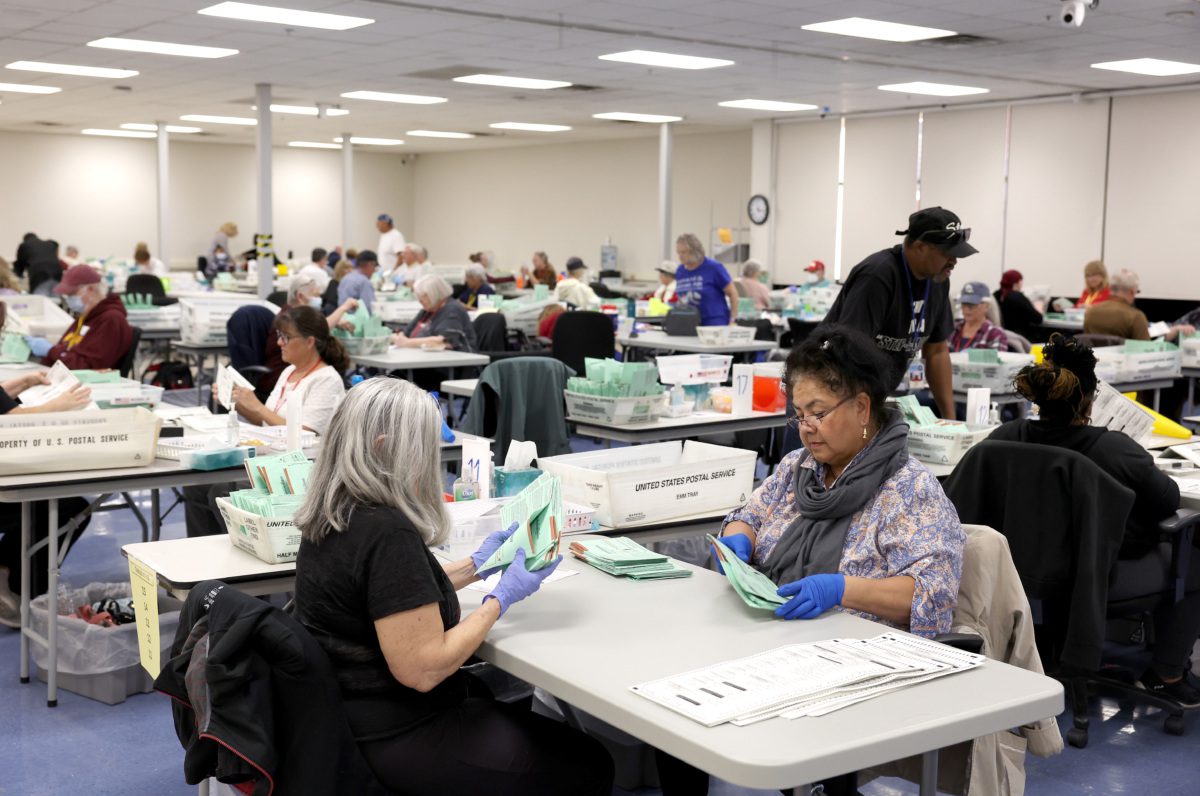
- Full hand counts cost more money, require more complex logistics, and take much more physical space than automated tallies. By contrast, modern voting systems are cost-effective and efficient. The increased burdens associated with full hand counts also may not be accompanied by additional funding necessary to meet the needs.
- Full hand counts take far longer than automatic tabulation, especially in high-turnout elections or those with multiple races on the ballot. Voting systems tabulate quickly and facilitate timely results that enhance voter confidence. Full hand counts, on the other hand, may delay result reporting.
- Full hand counts are likelier to lead to inaccurate results than automated tabulation. Voting systems are accurate and reliable. Jurisdictions performing full hand counts must build in additional time to audit—and sometimes redo—hand-tallied results to catch human error.
- Public education on voting systems is key. Calls for full hand counts often spring from distrust in voting systems. So election officials should reinforce public trust in their systems—and do so early and often, especially during highly visible election cycles.
In Shasta County, the Board of Supervisors voted to move to a full hand count beginning with the November 2023 election. As her team prepared for that election and looked ahead to the presidential primary and general elections in 2024, County Clerk and Registrar of Voters Cathy Darling Allen developed a manual tally plan spanning more than 80 pages and conducted two mock elections.
In a detailed analysis prepared for the county board, Darling Allen described substantial costs, challenges in recruiting and training enough qualified workers, and potential delays in election results. She also warned of unforeseen complications—the “multiple points of potential failures” that could further hamper the count.
Implications of a Full Hand Count
$658,925
Would cost $658,925 for the presidential primary alone, and probably twice that much for the general election, due to heavier turnout and more contests on the ballot.
375
Would require the hiring of 375 extra help staff to staff counting boards, for the presidential primary alone.
53,000
Would require tally teams to count an estimated 53,000 ballots by hand, including at least 17 races and ballot propositions and 125 possible selections.
75 Minutes
Would make it impossible to count all primary ballots on election night. In one mock election, even experienced counting staff took an average of 75 minutes to tally a batch of 25 ballots, plus nine more minutes to audit the results. Shasta County candidates and voters, Darling Allen wrote, should not expect results “until days after the election, at the earliest.”
Darling Allen’s plan for a full hand count included quality controls, carefully designed processes, and training guidelines, all of which she said would guard against failures “to the extent possible.” Despite her team’s best efforts, however, she warned that unforeseen complications could imperil the county’s ability to finish the count on time.
“We know that workers will make mistakes,” Darling Allen wrote to the board, “not out of ill will or lack of diligence but because these tasks will be repetitive and require significant attention to detail. Correcting those errors is often exceptionally time consuming, requiring portions of the count to be redone. As a result, if errors occur at a higher-than-anticipated rate, they, too, may threaten our ability to certify results by our legally mandated deadline.”
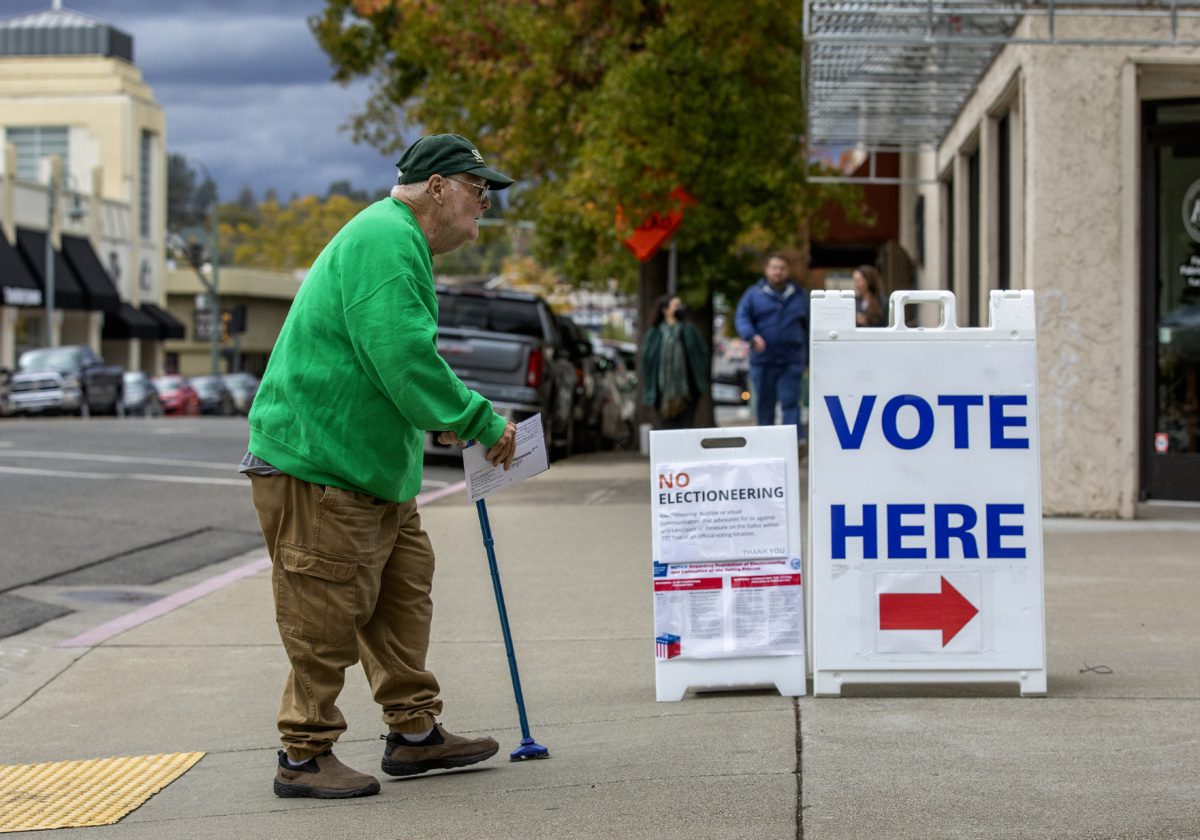
When a group of citizens proposed that Osage County try a full hand count for its municipal election in April 2023, the county clerk’s office was open to the idea. Even if it didn’t work out, Clerk Nicci Kammerich figured, it would be a learning experience.
The county normally uses a secure optical-scan system to count its ballots. After every election, the machine count is checked against a limited hand count. Under that system, the county has had no problems with accuracy since at least 2015, when Kammerich took office as county clerk.
The full hand count in April 2023 was a very different experience. Kammerich described it in a letter to a local newspaper. Her account reflects a broad range of challenges that election officials may expect if they move to a full hand count.
Based on her experience, and “[a]fter considering all factors of this election and comparing it to other elections that are similar,” Kammerich expressed her “fear that if we were to continue hand counting it would cost us more in time, money, losing volunteers, and accuracy of votes.”
She also noted that there was no issue with the county’s current voting system: “Our tabulation machines that the county uses for elections are faster, accurate and more efficient to get the job done. With the process of the recount when using tabulation machines, we can ensure there is no fraud and everything is accurate in a timely manner for our citizens.”
As a result, she concluded that “[o]ur office intends to move forward with our tabulation machines for upcoming elections.”
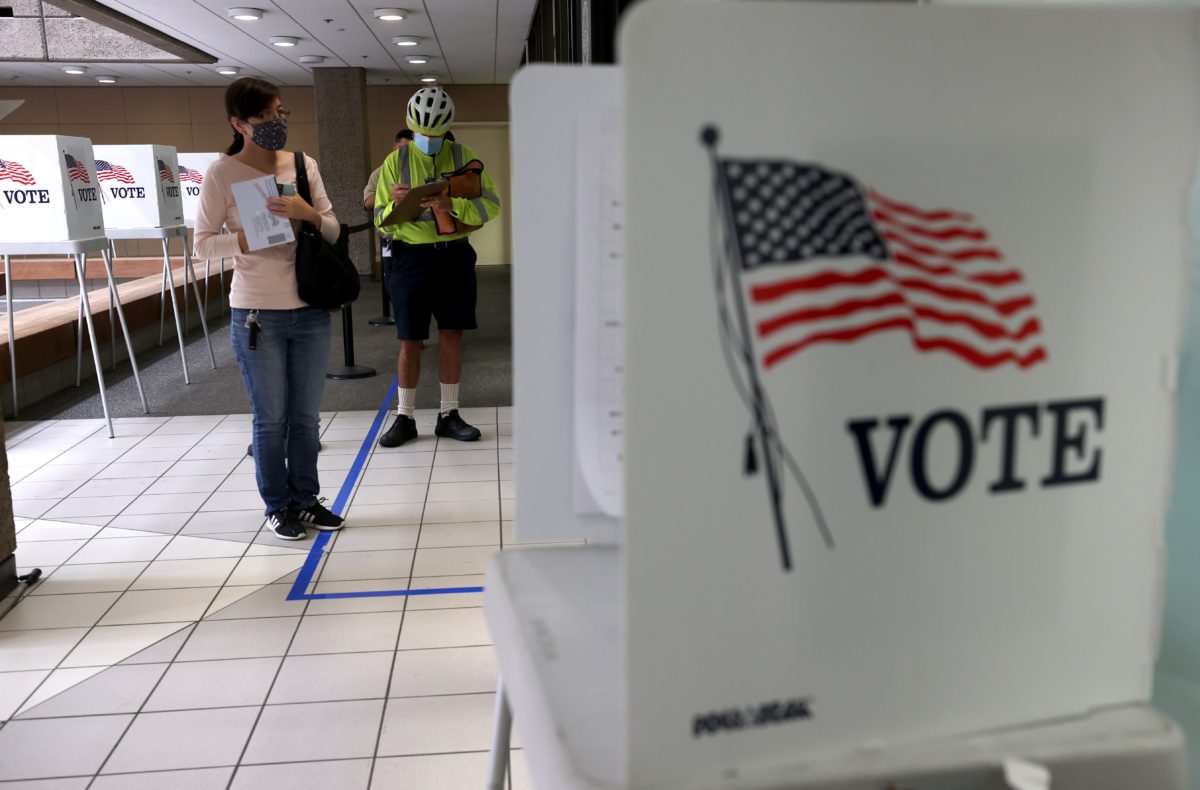
To understand why a full hand count takes so long, requires so many people, and can lead to so many mistakes, it helps to understand best practices for the process, step by step.
Tasks that are essentially effortless in an automated count require many additional steps during a full hand count. For example, voting systems automatically group ballots by ballot type or precinct. In a manual tally, a team of people must do it. In an automated tally, ballots do not normally pass through many hands, and results can be traced back to individual ballot images within the system. By contrast, in a manual tally, many different people handle ballots, and a high volume of paper must be physically tracked and processed simultaneously, all while guarding against inadvertent or intentional errors. Especially in the current environment, the number of people handling ballots in a manual tally can also give rise to concerns about tampering. As a result, manual tallies require many more tracking and quality control processes.
Note that some of these steps may not be necessary if the jurisdiction retains some voting system equipment, for example to scan ballots for tracking and audit purposes or to add up results. In addition, some of these steps can be simplified if state law permits the use of electromechanical systems in a hand count.
Hazards of Precinct Hand Counts
Some proponents of full hand counts have proposed counting all ballots at the precincts. Especially in large elections, performing full hand counts at the precincts adds substantial complexity. Supervision and quality control cannot be centralized. Vote-by-mail ballots, which normally would be counted at a central location with a voting system, must instead be delivered to their corresponding precincts for counting. And after counting, all ballots and tally sheets—potentially thousands of ballots and hundreds of tally sheets—must be moved from precincts to a central location and combined for auditing and production of results. As a result, precinct hand counts can lead to additional problems, including human error in counting, improper chain of custody, misplaced tally sheets and ballots, premature disclosure of results, errors in aggregation, and security flaws.
As you read the steps necessary for a full hand count, keep in mind that these steps represent best practices—and cover only the steps after the polls close and counting begins. Not shown here are the many additional steps required before the counting and canvass. Those include recruiting and training the people required to count the ballots, finding sufficient and secure space to do the counting, extensive preparation, and setup.
Also keep in mind that a failure at any step described below can add confusion, stop the process, and require redoing parts of the count.
The Manual Tally Process
Once counting begins:
-
 1
1Ballot Styles Grouped
If a central counting location is used, ballots are grouped by ballot style or precinct. Ballots are grouped by style or precinct for at least two reasons: First, so that the correct tally sheets, reflecting the correct contests, can be used. Second, some states require reporting and tabulation by precinct for statewide elections. Even smaller jurisdictions can have many precincts. Segregating by precinct is necessary to meet such reporting requirements and to reconcile votes cast to voter turnout. While voting systems automatically recognize each ballot’s precinct, a hand tally requires a manual presort of potentially tens of thousands of ballots into the correct precinct batches-and maintaining the integrity of those groupings throughout the process.
-
 2
2Ballot Tracking
Ballots are stamped with tracking numbers. Especially if ballots are not first scanned into a voting system for tracking, ballot cards should be stamped with an identifying number. With a voting system, ballots are scanned and a cast vote record is produced, which helps with reconciliation and guards against the misplacing of ballots. Without these safeguards, a hand count should have a process of serialization to help make sure ballots aren’t lost or injected into the count inappropriately. Offices may be dealing with hundreds of thousands of ballots, each of which may have several cards. This volume of paper makes it hard to guarantee that each vote is counted only once if these safeguards are not in place.
-
 3
3Ballot Batches Created
Ballots are grouped into manageable batches, often batches of 25 to 50. Human teams can’t reliably count larger batches of ballots at one time.
-
 4
4Batches Recorded
Ballot serial numbers and the batches to which those ballots have been assigned are recorded. The record of which batches include which ballots facilitates tracking, recounts, and audits.
-
 5
5Batches to Tally Teams
Batches are issued to tally teams, usually composed of four to seven people. Each team typically has one person to call out the voter’s choice, at least one person to check the caller’s work, and at least two people to record the vote.
-
 6
6Votes Called and Marked
For the first contest on the ballot, the votes for each candidate or ballot issue are called out by tally-team callers and recorded on tally sheets by tally-team recorders. One member of the tally team will usually observe to make sure the vote was properly called. In many jurisdictions, contests are taken one at a time to avoid confusion and increased risk of error.
-
 7
7Marks Tallied
When all the votes for the first contest have been called, the recorded votes are tallied on the tally sheets.
-
 8
8Quality Control
Tally sheets for the first contest are checked for quality control. For example, the number of ballots counted during the tally may be compared with the total number of votes (including under- and overvotes) on the tally sheets, and/or the two recorders’ tally sheets are compared against each other.
-

Repeat Steps 6–8
Steps 6–8 are repeated for additional contests. There can be dozens of contests on a single ballot.
-
 9
9Results Aggregated
Results from the tally sheets for all contests in the batch on the ballot are aggregated into a single batch tally sheet. Batch results must be transferred from individual batch tally sheets to a single batch tally sheet collecting results for each batch. This allows votes from all batches to be more easily aggregated.
-
 10
10Ballot Accounting
Ballot accounting and reconciliation of all ballots is performed. This ensures that the number of ballots hand-tallied matches the number of voters who voted.
-
 11
11Results Audited
The results are audited. Jurisdictions use different methods to audit hand count results, but audit processes should be established to identify errors made in the transfer of information from each individual tally sheet to batch tally sheets prior to aggregating the results into a results report.
-
 12
12Results Reported
Result reports from batch tally sheets are aggregated, including by precinct and vote method. In jurisdictions that require reporting by precinct, the batch tally sheets must be aggregated and reported separately for each precinct. In addition, all the batch tally sheets must be added together to produce final results. Most jurisdictions also report by vote method (e.g., in person, mail, or provisional). This process of aggregating and reporting the results of each contest by precinct is done automatically when a voting system reporting module is used, but in a manual tally, staff must identify all batch tally sheets for each precinct by voting method, adding them together until each contest is reported by precinct and vote method and in total.
THE BOTTOM LINE:
Full hand counts require elaborate logistics—far beyond what is required in an automated tally, in which the voting system completes many tasks automatically and reliably. The additional complexity of a full hand count, paired with the number of people who handle ballots, also means there are more steps in the process where a hand count can fail or where the system can be exploited or challenged by motivated actors.
Moving to a full hand count means election officials have to plan for many additional steps. To name just a few responsibilities, an election official overseeing a hand count must:
- Design a counting process, including the forms and training materials necessary to tally.
- Create ballot-tracking and storage systems that ensure adequate chain of custody and accurate aggregation of results.
- Design a ballot reconciliation process to make sure the number of ballots hand-tallied equals the number of voters who cast a ballot.
- Design an audit process that will reliably catch errors at each step.
- Design a tabulation and reporting mechanism for reporting results to state authorities and the public.
- Recruit, manage, and retain temporary staff, making sure those workers can carry out the process with consistency and accuracy.
Election officials have to do all this while complying with state law, protecting ballot integrity, ensuring accuracy and timely results, and explaining to voters how the election will be administered.
Because of reporting and certification deadlines, election officials already have little room for error in their administration timelines for large elections. The complexity of a hand count only tightens this window. Resources and procedures, including contingency procedures, must be planned and executed well before the election.
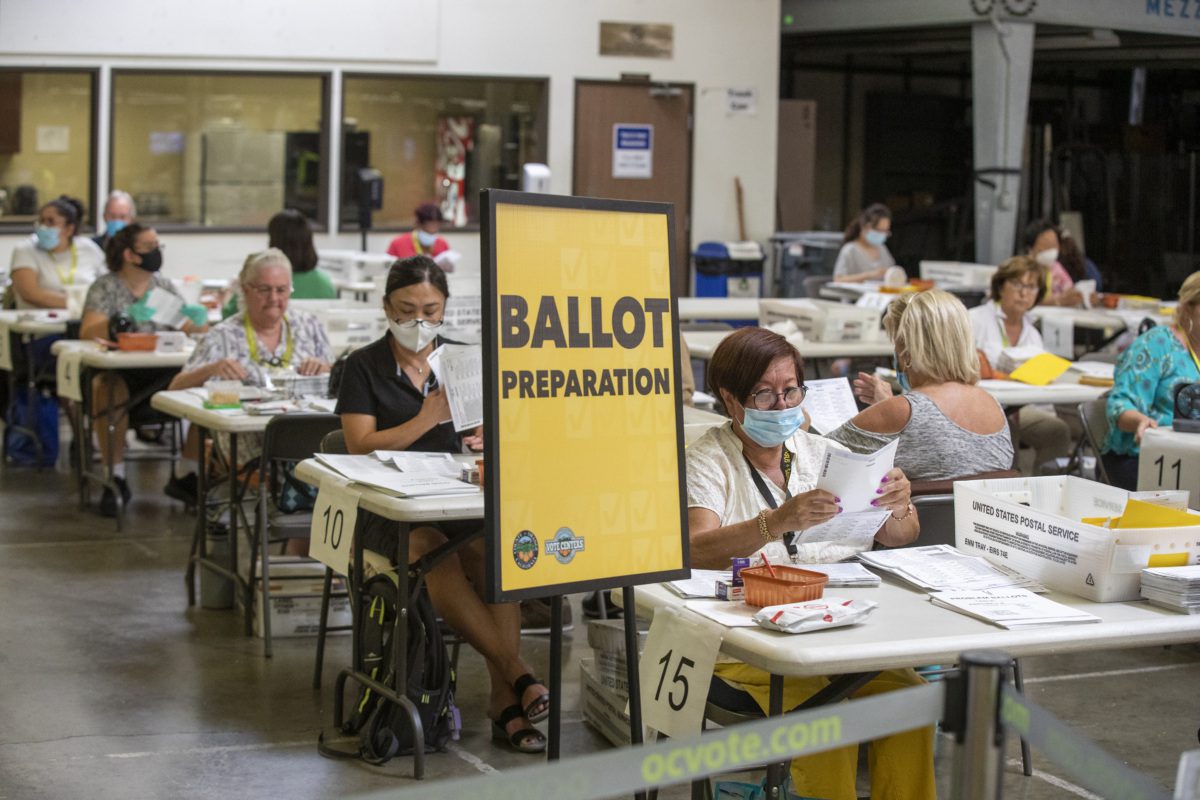
REAL WORLD EXAMPLE
Even in states where full hand counts are permitted under some circumstances, state officials have recognized the need for careful planning to ensure accuracy and timeliness. For example, in California, to “provide necessary processes and requirements to ensure security, chain of custody, accuracy, fairness and accessibility in the process,” state officials proposed regulations requiring submission of detailed plans outlining, among other things, plans for staffing, plans for completing the hand count by the certification deadline, plans for the physical space, plans for security, and contingency plans. Nevada implemented similar regulations in 2022 and again in 2023.
Shasta County, California, developed such a plan in 2023. The plan, which spanned more than 80 pages, demonstrates some of the complex logistics involved in a manual tally. As Clerk Cathy Darling Allen pointed out, full manual tallies require coordinating the operations of several teams, composed of potentially hundreds of workers. For the March 2024 election, she anticipated she would need roughly 375 staff just for the tally team. In addition, “[t]housands of ballots move through the hands” of those staff members. As a result, those ballots “must be carefully tracked, and chain of custody and ballot integrity must always be secured.” And processes also must guard against human error in tallying and compilation of results, which “are all too common.”
Darling Allen estimates her office spent roughly 3,725 hours developing a manual tally plan, conducting two mock elections to test the plan, implementing new voting equipment, and recruiting to staff the tally. That estimate does not include the time to conduct the hand tally itself.
Designing a Counting System
There are many considerations involved in designing a counting system. Election officials then must design tally procedures that comply with state and federal law and ensure secure, fair, and accurate results. For example, election officials must make sure:
- Ballot integrity is maintained through the counting process. Ballots pass through many hands to get from the ballot bag or envelope to the tally team, through audit, and back to storage. Procedures to maintain ballot integrity, including robust accounting and reconciliation, are even more important if ballots are not scanned to preserve their images before they are handled.
- The secrecy of results is maintained before the close of the polls. A voting system can keep results secret until the polls close; it is more difficult to maintain secrecy in a hand count if counting is allowed to start prior to the close of polls.
- Batches of ballots are manageable for tally teams. Unlike voting systems, which can handle large numbers of ballots simultaneously, human teams can count only a limited number of ballots at a time—usually about 25.
- The process of calling and recording votes will catch errors. These considerations are especially important because counting can be monotonous, and workers can get tired and make mistakes.
- Reports of results accurately aggregate batches and ballots. Voting system tabulators can quickly add up the varying combinations of ballots that determine the results of each contest in each jurisdiction, but it’s much more challenging for humans.
- Audit processes reliably uncover problems in the manual tally.
REAL WORLD EXAMPLE
In Kerr County, Texas, Republican Party chairman and election judge Paul Zohlen pushed back on the idea of hand counting in the county, voicing concerns about ballot tampering by staff involved in a hand count and expressing his view that “the potential is legendary” for “possible corruption.” By contrast, he noted that he is confident in the current integrity of voting in the county.
Recruiting and Retaining Staff
Full manual tallies often require the hiring of a significant number of temporary workers. This has proved difficult in many jurisdictions. Election departments often turn to temporary workers, workers from other departments, or volunteers. Temporary workers lack experience, and the nature of the work can lead to a disruptive cycle of attrition and training new workers mid-count.
Some of the staffing challenges to consider:
- Election departments need several tally teams, each typically staffed with four to seven people. Large elections may require dozens of teams.
- The monotonous and physically taxing nature of the work requires giving these workers more frequent breaks, resulting in the need for more workers and additional shifts.
- Departments need staff to monitor tally teams and audit their results.
- Still more staff is required to serialize, sort, batch, track, and transport ballots.
- All these workers must be properly trained and supervised in the procedures developed by the election department.

REAL WORLD EXAMPLE
In Mohave County, Arizona; Osage County, Missouri; and Kerr County, Texas, election officials concluded that recruiting and retaining staff would be exceptionally difficult. Mohave determined that, while 245 people would be required to perform the count “if every person recruited participated in the process every day,” that would not be the case, and the county would in fact need to recruit twice that number. In addition, Mohave pointed to the recruitment challenges of “people not committing to the entire time, attrition, and other unforeseen circumstances.”
In Osage, the clerk noted that a majority of election judges raised concerns about hand counts “and asked to please not do hand count again or they will have to quit being an election judge as it is very overwhelming and time consuming.” Similarly, in Kerr, Republican Party chairman and election judge Paul Zohlen noted that several past election workers had already indicated they would be unwilling to return if the county shifted to hand counting—and that he believed it would be difficult for the county to recruit replacements.

Space Considerations
Many jurisdictions will need to lease, rent, or purchase additional space for large elections. Full hand counts require more infrastructure, including space for:
- Serializing, sorting, and batching ballots.
- Accommodating several multi-member tally teams.
- Separating teams to avoid confusion between teams during the tally, because the person recording the vote must be able to clearly hear the person calling the vote.
- Auditing tally results.
- Aggregating tally results.
- Securely and accessibly storing ballots for tabulation and audit.

REAL WORLD EXAMPLE
In Mohave County, Arizona, the Elections Department determined that the County Fairgrounds “is the only suitable location … that is large enough to accommodate the number of people needed to perform the hand tally and provide enough spacing between groups to allow them to work in an environment free from distractions.” This posed extensive logistical issues, as “[b]allots will have to be transported between the Elections Department and the Fairgrounds multiple times per day. Vehicles will have to be acquired from Motor Pool, and security guards will have to be hired to transport the ballots throughout the day. Political party members should be available to accompany the transportation of ballots each time they are moved between the Elections Department and the Fairgrounds to ensure the chain of custody requirements are being met. A sworn, deputized member of the Elections Department must accompany the transportation of ballots.” In addition, the county estimated that installing the necessary cameras in the new location would cost almost $100,000.
Contingency Planning
Because hand counting is time-consuming and complex, a breakdown in any part of the process can threaten compliance with certification deadlines. For example, temporary workers can quit during the process because it is tedious or difficult, or results can fail audits because of recording or math errors. These failures can cause significant and time-consuming disruption. As a result, officials should have robust contingency plans to ensure that results can be obtained and certified in the face of the many challenges that can arise during a full manual tally. This may include scanning batches using voting equipment.
REAL WORLD EXAMPLES
In Nye County, Nevada, an attempt to conduct a full hand count resulted in a 25 percent error rate in the first day. County Clerk Mark Kampf was forced to dismiss several volunteers for repeated errors.
In Osage County, Missouri, Clerk Kammerich implemented the secretary of state’s suggestion to retain some automated tabulation equipment to audit the hand-counted results. She ended up “glad we were advised to take this extra step,” because it identified errors in the hand-counted results that required recounts.
After Tripp County became the first South Dakota county in nearly 20 years to conduct a hand count, it discovered that 75 ballots went “missing.” The error, and its source, were discovered during a voting system audit of the hand count. The “missing” ballots had actually been misfiled. Staff had placed ballots in the wrong precinct’s ballot box. As Tripp County Auditor Barb Desersa put it, the sequence of events “shows the machine is more accurate” because it knew which precinct the ballots belonged to, and “read it as ‘those don’t belong there.’” “The machine caught it,” she said. “To me, that shows that the machine is more accurate than humans.”

THE BOTTOM LINE:
The additional staff, space, and time required to perform a hand count mean significantly increased costs.
As we discussed above, hand counts require many more resources than automatic tallies. The additional staff and space requirements add considerable cost, especially in large elections, which may require new, larger facilities and hundreds of additional staff.
Many jurisdictions have found that these costs far exceed those associated with a certified voting system. This is especially true because many jurisdictions have found that they must retain at least a portion of their voting systems to comply with federal law protecting voters with disabilities, to design ballots, to audit the results of their hand counts, and to have a contingency plan if their hand count fails.

REAL WORLD EXAMPLES
After its hand count test, Mohave County, Arizona’s Elections Department projected that performing hand counts in its 2024 statewide elections would cost more than $1 million. This figure was largely based on the cost of staff time to count about 195,000 ballots, but the Elections Department also found that there was only one facility in the county with enough space to accommodate counting, and it had to be equipped with security cameras and guards, as well as a network with adequate bandwidth for live-streaming and recording.
In Shasta County, California, Clerk Darling Allen determined that a full hand count of the 2024 presidential primary, estimated to involve 53,000 ballots and at least 17 races and propositions, would cost about $659,000. The general election would probably be about twice as expensive, she concluded, because of higher turnout and about twice as many contests on the ballot. Darling Allen estimated that the county would need about 375 extra help staff just for the primary, all of whom must be paid under California law, to staff counting boards. In addition, the county would need “enough workers to staff, train, and supervise our examination and imprinting, scan, library, audit, adjudication, duplication, and results reporting teams.” She estimated that the physical space to house all teams and operations would cost an additional $80,000 per year. And none of this included the almost $1 million necessary to purchase voting system components that would still be necessary to accommodate disabled voters, design ballots, and scan ballots for audit purposes. By way of comparison, in 2017, Shasta secured an eight-year lease of its prior voting system for roughly $2 million—in other words, about the cost of the additional space, staff, and supplies necessary for only a single year of hand counting.
And in Osage County, Missouri, Clerk Kammerich initially “thought our county would be saving a great deal of money” by implementing full hand counts, but “[u]nfortunately, that was not the case.” She ultimately found that costs “were actually higher” for the hand count.
THE BOTTOM LINE:
Full hand counts take longer than automated counts. They may prevent election officials from meeting certification deadlines. And they may undermine Americans’ faith in elections by preventing a speedy, accurate count.
Timely and accurate election results are pivotal to Americans’ faith in elections. Candidates and voters demand them, and they reduce the time for misinformation and disinformation to spread as voters wait for an outcome. Timely counting is also critical to making sure election officials can meet their deadlines for canvassing and certifying election results and certifying their presidential electors. But election officials’ experience, as well as multiple studies, confirm that hand counting is much slower than automated tabulation. The counting process itself is slower, and identifying and correcting errors is slower still.

REAL WORLD EXAMPLE
Mohave County, Arizona, conducted a test run in 2023 consisting of 850 ballots with approximately 36 races per ballot as it explored a full hand count. The Elections Department noted that it must certify the results of the presidential preference and primary elections within 14 days of these elections, and must canvass the results of the general election within 20 days. In the county’s study, teams of seven counters took up to three minutes per ballot to count marked ballots from the 2022 general election. For a seven-person counting team working around the clock, that works out to as long as 219 days. To successfully count the 2024 primary and general elections in Mohave County by hand, Elections Director Allen Tempert calculated, the county would need to hire at least 245 tally workers, plus dozens more to serve on write-in and recount boards.
As Tempert noted in his report to the Board of Supervisors, even that didn’t capture the extent of the time crunch. “Each of the 105,000 or more ballots that will be cast for the 2024 General Election will have to be reviewed a second time to capture and record the write-in information,” he wrote. “This process could not be done at the same time as tallying votes for candidates whose names are officially printed on the ballot due to the high probability of errors that will occur. The tallying of write-in votes will take weeks to accomplish and require many people to be hired for write-in tally boards in addition to the hundreds of people needed to tally ballots.”
Mohave’s findings about the delays associated with a full hand count were consistent with Shasta County, California’s. In its second mock election, Clerk Darling Allen found that it took her team of mostly experienced workers 75 minutes to tally a batch of 25 ballots. She also performed time trials for other portions of the process, which added more time. Extracting and serializing a batch of 100 ballots took 55 minutes, and auditing took roughly 9 additional minutes per batch of 25. Finally, she noted that aggregating and reporting results would add significant time, especially if she were barred from using electromechanical devices in the process.
The state of California enacted a law in October 2023 restricting full hand counts to counties with 1,000 or fewer registered voters and special elections with 5,000 or fewer registered voters. Shasta County, which had about 9,500 registered voters eligible for its November 2023 special election, counted the ballots in that election with tabulating machines.

THE BOTTOM LINE:
Hand counts, especially those conducted at large scale, are prone to error. Catching and correcting errors is time-consuming and difficult.
Close races can be decided by a handful of votes. Yet full hand counts in the United States are highly likely to lead to inaccurate results. Here are some of the reasons:
- U.S. ballots are exceptionally long, especially compared with countries like France, because they frequently include candidate races for federal, state, and local office, as well as state and local propositions and bond measures.
- A single consolidated election can require many ballot styles—even dozens. Different ballot styles are sometimes required to accommodate district, party, and language. Compared with other countries, where just one race might appear on a national ballot, manual tally teams in U.S. jurisdictions frequently must examine and accurately tally a variety of ballot styles and numerous races per ballot.
- Research shows that people lose focus when doing repetitive, monotonous tasks, like counting hundreds or thousands of votes. This can result in inaccurate tallies and requires multiple layers of checks and audits. Re-tallies are required when discrepancies are discovered, adding significant time to an already lengthy process.
- Manual tallies require accurately tracking a huge number of forms and ballots to make sure no ballots or tally sheets are misplaced or mixed. Failures in tracking can result in voters being disenfranchised or votes being double-counted.
- In a manual tally, many people touch ballots as part of the processes of sorting, tallying, and auditing. In addition, there are many points in the process where data is transferred from tally sheets, result logs, aggregation reports, and final results reports. This introduces a number of additional points where human error can enter the process and cause inaccurate results.
REAL WORLD EXAMPLE
In Mohave County, Arizona’s hand count test run, a deck of 850 ballots had roughly 36 races per ballot. The hand count produced errors in 46 cases. The clerk noted that, in a real election, rectifying those errors would require election workers to re-tally those races. The clerk observed, among other things, bored and fatigued staffers who failed to perform their functions, illegible handwriting that made it hard to discern the tally, workers speaking too quickly to accurately record results, and workers who heard or said the wrong candidate’s name.
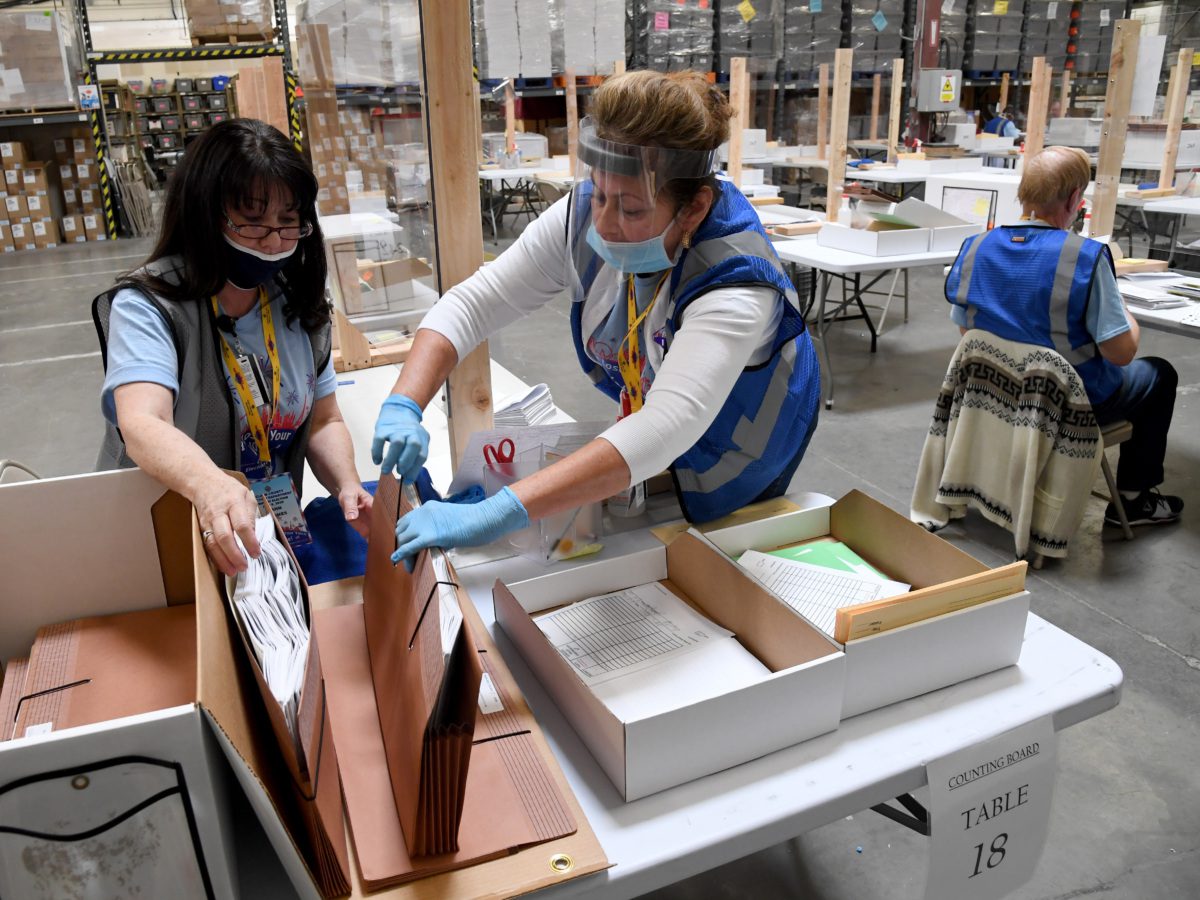
What the Research Says
Studies confirm machine counts are more accurate than full hand counts:
- Ansolabehere et al. (2018): This study examined statewide recounts for two elections in Wisconsin—a 2011 Supreme Court race and the 2016 presidential race. It found that election night hand counting produced error rates of approximately 1.4 to 1.8 times that of optical scanning.
- Ansolabehere and Reeves (2004): This study examined election night count and recount data from New Hampshire going back to the 1940s. It found that, in recent elections, election night hand counting produced error rates about two times that of election night machine scans, even after controlling for factors like the type of race and number of ballots cast.
- Goggin et al. (2012) and Goggin and Byrne (2007): These papers examined hand counts from small lab experiments where the true ballot counts were known. Each paper found an error rate of around 1.4 percent, larger than automatic tabulator error rates in other studies.

Calls for full hand counts often arise when voters are concerned with or lose confidence in voting systems for a variety of reasons. Modern voting systems are complex and use many pieces of equipment. And neighboring counties or other states featured in the news may use different systems, adding to potential voter confusion or questions. Election officials should communicate with voters clearly and regularly about these systems, building trust ahead of time rather than waiting until voters are confused. Public education and transparency are key to shoring up a lasting confidence in our democratic processes. In your jurisdiction, you can:
- Create and publicize simple, engaging voting system explainers so the public can understand your voting system and how it works.
- Making these explainers available on your website and/or social media channels can help people find trustworthy content.
- Putting your text directly on the website and/or social media channels, rather than featuring a linked PDF, can make it easier to find in searches.
- In these materials, explain key security and accuracy features in simple terms, without jargon. Key features include:
- Certification of voting systems.
- Lack of connection to the internet.
- Use of paper ballots or voter verified audit trail.
- Physical security measures and chain of custody procedures.
- Audit processes that ensure the voting system worked properly.
- Promote opportunities in a variety of mediums—including on social media—to view logic and accuracy testing and other security processes.
- Amplify opportunities for bipartisan poll observers to observe the election.
- Similarly, promote opportunities to view audits and other post-election processes that guarantee accuracy.
- Enlist trusted bipartisan community messengers to attend these events and spread the word about them—and publicize their participation.
- Post videos and explainers of the processes and procedures that guarantee the voting system’s accuracy to your website and social media channels.
- Encourage local media to cover the process and procedures your team has in place to ensure voting systems are accurate and secure in spreading the word about your voting system and the procedures and features that guarantee its accuracy.
- Be transparent, simple, and complete about any issues that may arise and demonstrate proactive steps to address any problems. Similarly, make clear when a problem elsewhere does not affect the voting system used in your jurisdiction.
- Generally speaking, do not repeat or raise the profile of misinformation or disinformation by sharing or re-posting the misleading claims.
- Instead, amplify and provide easy-to-understand information about why your voting system can be trusted, and how your office’s practices ensure a safe, secure election.
For more comprehensive communications guidance for election officials, please check out The Elections Group’s Telling Our Story: An Elections Communication Guide.

The experience of election officials across the country has made clear that full hand counts have critical disadvantages compared with automatic tallies, especially in elections with complex ballots and high turnout. They cost more money. They require more staff and more physical space. They take far longer than automated counts, putting jurisdictions at risk of missing reporting and certification deadlines. And they present an enormous logistical challenge: Election officials must plan many additional steps, each of which can fail—and add even more time and complexity to the canvass. After all this, full hand counts risk significantly higher error rates. Partial hand counts can provide a benefit when used in the common practice of tabulation audits. But a full hand count is an entirely different undertaking, and it carries significant risks and costs. By contrast, modern voting systems are cost- effective, faster, and more accurate.
Complexity & Cost
Many jurisdictions have provided real world examples of the resources required for a full manual tally—and the associated challenges.
- Mohave County, Arizona: $1 million in costs. After its hand count test, Mohave’s Elections Department projected that performing hand counts in its 2024 statewide elections would cost more than $1 million. This figure was largely based on the cost of staff time to count about 195,000 ballots, but the Elections Department also found that there was only one facility in the county with enough space to accommodate counting, and it had to be equipped with security cameras and guards, as well as a network with adequate bandwidth for live-streaming and recording.
- Osage County, Missouri: New costs and challenges recruiting counters. In Osage County, Clerk Nicci Kammerich initially “thought our county would be saving a great deal of money,” by implementing full hand counts, but “[u]nfortunately, that was not the case.” She ultimately found that costs “were actually higher” for the hand count. She also noted that a majority of election judges raised concerns about hand counts “and asked to please not do hand count again or they will have to quit being an election judge as it is very overwhelming and time consuming.”
- Kerr County, Texas: Election workers object to hand counting. In Kerr, Republican Party chairman and election judge Paul Zohlen noted that several past election workers had already indicated they would be unwilling to return if the county shifted to hand counting—and that he believed it would be difficult for the county to recruit replacements.
- Shasta County, California: Significant staffing needs and new building. In Shasta County, Clerk Cathy Darling Allen found that conducting a full hand count required coordination of eight teams composed of potentially hundreds of staff—375 extra help staff to staff counting boards for the presidential primary alone. She forecast that, in that election, a full hand count would cost $658,925. She estimated that the general election would likely cost roughly twice that much, with heavier turnout and more contests on the ballot. Finally, she estimated that it would cost the county $80,000 a year to house the necessary personnel and operations.
- Georgia: High costs in recount of 2020 presidential race. A state-mandated recount of just one race on the ballot cost some Georgia counties hundreds of thousands of dollars.
Delay
Real world examples show that full hand counts are considerably slower.
- Cobb County, Georgia: 100 days to hand count every race on every ballot. Following the state- mandated recount of the 2020 presidential race, a Cobb County election worker estimated that it would have taken the elections department 100 days to count every race on each ballot using the same procedure employed for just the recount of the presidential race.
- Mohave County, Arizona: 219 days to hand count. Mohave County, Arizona, conducted a test run in 2023 consisting of 850 ballots with approximately 36 races per ballot as it explored a full hand count. In the county’s study, teams of seven counters took up to three minutes to count marked ballots from the 2022 general election. For a seven person counting team working around the clock, that works out to as long as 219 days. To successfully count the 2024 primary and general elections in Mohave County by hand, Elections Director Allen Tempert calculated, the county would need to hire at least 245 tally workers, plus dozens more to serve on write-in and recount boards.
- Shasta County, California: More than 75 minutes per batch of 25. In a second mock election, Clerk Darling Allen found that it took her team of mostly experienced workers 75 minutes to tally a batch of 25 ballots. She also performed time trials for other portions of the process, which added more time. Extracting and serializing a batch of 100 ballots took 55 minutes, and auditing took roughly 9 additional minutes per batch of 25. Finally, she noted that she was unable, in a mock election, to estimate the time that compiling and reporting results would add to the process, but she anticipated that it would be significant, especially if she is barred from using electromechanical devices.
- Esmeralda County, Nevada: More than seven hours to count 317 ballots. After the county commission approved a hand count process for the 2022 primary, county commissioners and election workers spent more than seven hours hand counting a mere 317 ballots. Esmeralda County, the least populous county in Nevada, was the last to certify its results in this primary, less than two hours before the midnight certification deadline.
Inaccuracy
Real world examples show that full hand counts are less accurate than machine tabulation.
- Nye County, Nevada: 25 percent error rate. The Nye County clerk estimated a 25 percent error rate on the first day of the attempted 2022 hand count.
- Mohave County, Arizona: High error rates. In a 2023 hand count test run, a test deck of 850 ballots had roughly 36 races per ballot. The hand count produced errors in 46 cases. The clerk noted that, in a real election, rectifying those errors would require election workers to re-tally those races. The clerk attributed errors to disengaged and tired staffers who stopped paying attention to the process; sloppy handwriting that made it hard to discern the tally; workers speaking too quickly to accurately record results; and workers who heard or said the wrong candidate’s name.
- Tripp County, South Dakota: Voting system identifies human error after hand count. After Tripp County became the first South Dakota county in nearly 20 years to conduct a hand count, it discovered that 75 ballots went “missing.” The error, and its source, were discovered during a voting system audit of the hand count. The “missing” ballots had actually been misfiled. Staff had placed ballots in the wrong precinct’s ballot box. As Tripp County Auditor Barb Desersa put it, the sequence of events “shows the machine is more accurate” because it knew which precinct the ballots belonged to, and “read it as ‘those don’t belong there.’” “The machine caught it,” she said. “To me, that shows that the machine is more accurate than humans.”